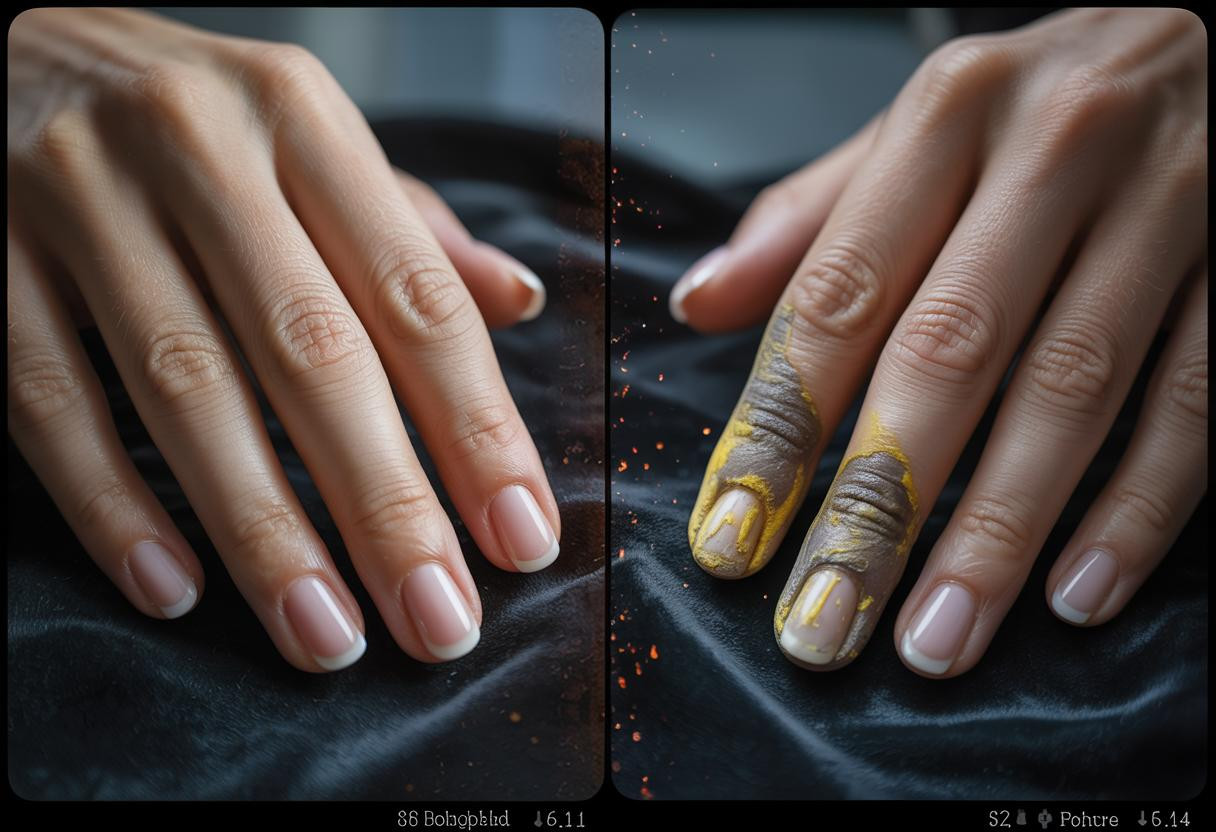The beauty world is on high alert as dermatologists sound the alarm on a trendy nail enhancement that’s causing a surge in fungal infections. Long-lasting, moisture-trapping gel and dip powder manicures have become a staple in nail salons across America, but these seemingly harmless beauty treatments are creating perfect breeding grounds for potentially serious infections.
Why dermatologists are raising red flags about your favorite manicure
“We’re seeing a concerning increase in severe onychomycosis cases directly linked to certain nail enhancement techniques,” warns Dr. Maya Patel, a leading dermatologist at Columbia University Medical Center. “The prolonged moisture trapped between artificial nails and natural nailbeds creates an ideal environment for fungal growth.”
Identifying the danger signs before it’s too late
Fungal nail infections don’t happen overnight. Early warning signs include:
- Yellowing or discoloration of the nail
- Thickening or brittleness
- White spots or streaks on the nail surface
- Distorted nail shape or separation from the nail bed
If you notice these changes, seeking prompt treatment could prevent months of painful recovery. Many women dismiss early symptoms as simple nail damage, allowing infections to establish deeply before seeking help.
The treatment timeline: longer than you think
Unlike other beauty mishaps, fungal nail infections can’t be fixed overnight. “These infections are like stubborn tenants who’ve signed a long-term lease,” explains Dr. Samantha Chen, a dermatologist specializing in nail disorders. “Once established, treatment typically takes 6-12 months for complete resolution, and many patients require oral medications with potential side effects.”
Who’s most at risk from this beauty trend?
While anyone can develop a fungal nail infection, certain groups face heightened risks:
- People with diabetes or compromised immune systems
- Adults over 50 with naturally slower nail growth
- Individuals with previous nail trauma or injuries
Prevention strategies that don’t sacrifice style
You don’t have to abandon beautiful nails completely. Safer alternatives include taking regular breaks between salon services and opting for healthier nail care routines. Traditional polish, though less durable, allows nails to breathe and minimizes infection risk.
Natural remedies showing promise
Some patients are finding success with natural antifungal alternatives. Tea tree oil and oregano oil have demonstrated antifungal properties in preliminary studies, though dermatologists caution these should complement rather than replace medical treatment.
When salon hygiene matters more than price
The salon you choose could make all the difference. “Think of nail implements as surgical instruments,” says Dr. Patel. “Would you want your surgeon using tools that weren’t properly sterilized?” Always choose establishments with visible sterilization practices and technicians who don’t hurry through crucial sanitation steps.
The connection between nail infections and systemic inflammation
Recent research suggests untreated fungal infections may contribute to systemic inflammation, potentially affecting overall health. This emerging connection underscores the importance of taking even seemingly cosmetic infections seriously.
Is your perfect manicure worth the risk?
As beautiful as trendy nail enhancements may be, consider whether perfect nails today are worth potential medical complications tomorrow. With increasing awareness of these risks, many beauty enthusiasts are finding healthier ways to express themselves through nail art that prioritizes nail health without sacrificing style completely.
